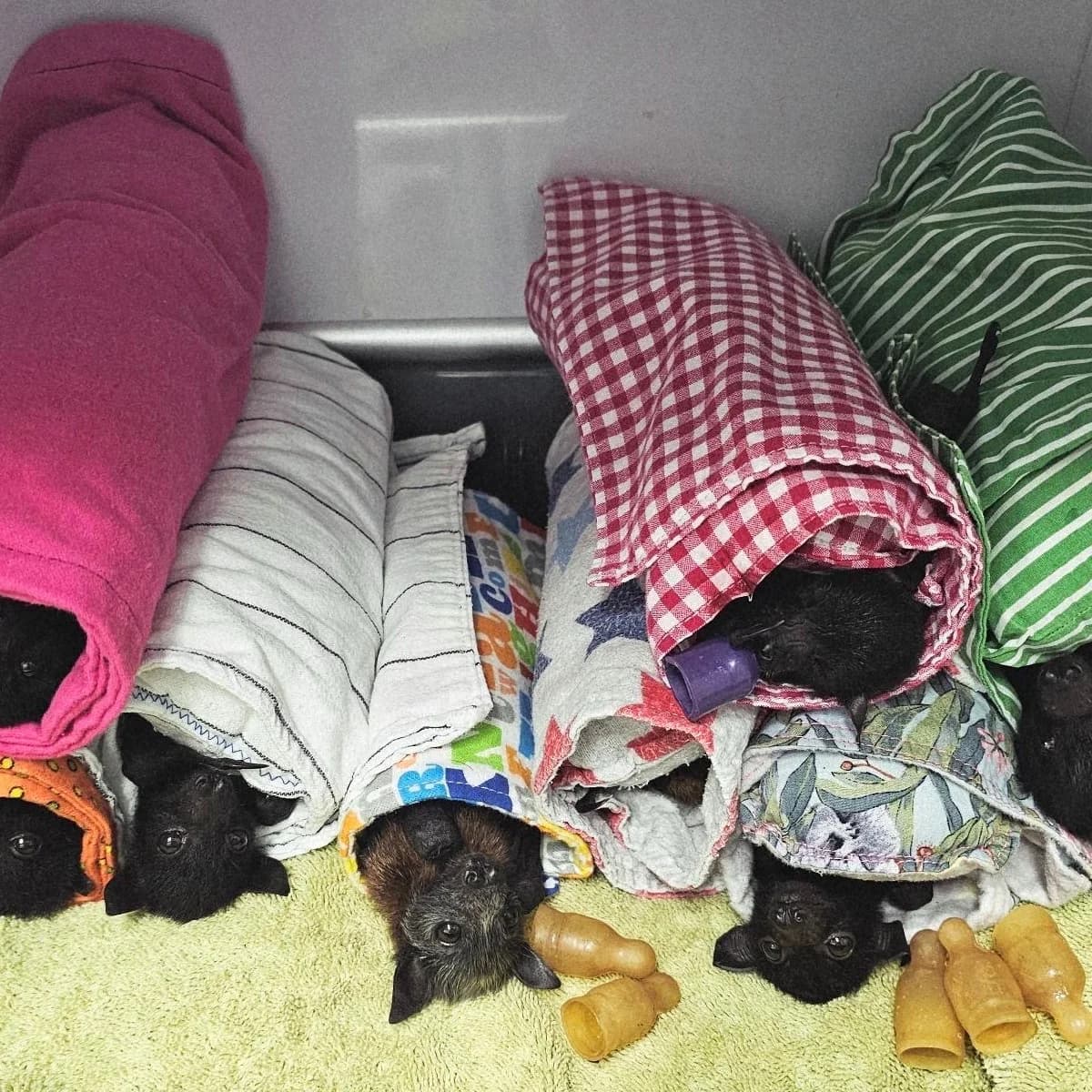We're loading the full news article for you. This includes the article content, images, author information, and related articles.
A severe hailstorm in Queensland, Australia, has inflicted critical injuries on nearly 120 flying foxes, including the nationally 'Vulnerable' grey-headed species. The event highlights the growing threat of extreme weather

GLOBAL - A severe hailstorm with hailstones reportedly up to 10cm in diameter devastated a colony of flying foxes in Esk, a township in Queensland, Australia, over the weekend of Saturday, 1 November 2025. The event resulted in almost 120 bats being hospitalized with severe trauma, including smashed faces and broken wings, and left approximately 60 pups orphaned, according to a statement on Tuesday, 4 November 2025, by the Royal Society for the Prevention of Cruelty to Animals (RSPCA).
Volunteers from Bat Conservation and Rescue Queensland (BCRQ) discovered the injured animals on the ground and in trees following the storm. The injured bats, a mix of black, little red, and grey-headed flying foxes, were transported to the RSPCA wildlife hospital in Wacol for urgent veterinary care. David Zammit, an RSPCA animal rescue officer, described the injuries as primarily resulting from the impact of the large hailstones.
Flying foxes are considered a keystone species in Australia, playing a critical role in the long-distance pollination and seed dispersal of native forests. A single flying fox can disperse up to 60,000 seeds in one night. This service is vital for the genetic diversity and resilience of ecosystems, including eucalypt forests and rainforests, which in turn support other wildlife and industries like timber and honey.
The grey-headed flying fox (Pteropus poliocephalus), one of the species impacted by the hailstorm, is listed as 'Vulnerable' under Australia's national Environment Protection and Biodiversity Conservation Act 1999. Their populations have declined due to habitat loss from urban development and land clearing. Climate change is exacerbating these threats, with increasingly frequent and intense heatwaves and storms causing mass casualties. In one 2018 heatwave, a third of the spectacled flying fox population perished, leading to its status being upgraded to 'Endangered'.
While geographically distant, the Queensland incident serves as a stark warning for Kenya's own diverse bat populations. Kenya is home to about 110 bat species, representing a quarter of the country's mammal species. Similar to their Australian counterparts, Kenyan bats provide essential ecosystem services. Fruit bats are crucial for pollinating key plant species like the baobab and dispersing seeds, which aids in forest regeneration, while insectivorous bats control agricultural pests, a vital service for a nation reliant on subsistence farming.
Kenyan bat populations face significant threats from habitat destruction, driven by deforestation for agriculture and settlement, as well as persecution stemming from negative cultural beliefs. The Kenya Bat Conservation Network (KenBAT) highlights that roosts in caves and trees are often deliberately destroyed. Furthermore, extreme weather events linked to climate change, such as the severe drought in 2022-2023 that killed thousands of wild animals in the Amboseli ecosystem, pose a growing threat to all wildlife, including bats. The Intergovernmental Panel on Climate Change (IPCC) has noted that East Africa will experience varied and extreme rainfall distribution, increasing the risk of events that can decimate wildlife populations.
The mass casualty event in Queensland underscores the vulnerability of bat populations to sudden, severe weather phenomena. For Kenya, it emphasizes the urgent need to bolster conservation efforts, protect natural habitats, and mitigate the local impacts of a changing global climate to safeguard its own ecologically and economically vital bat species.
Keep the conversation in one place—threads here stay linked to the story and in the forums.
Other hot threads
E-sports and Gaming Community in Kenya
Active 7 months ago
Popular Recreational Activities Across Counties
Active 7 months ago
The Role of Technology in Modern Agriculture (AgriTech)
Active 7 months ago
Investing in Youth Sports Development Programs
Active 7 months ago